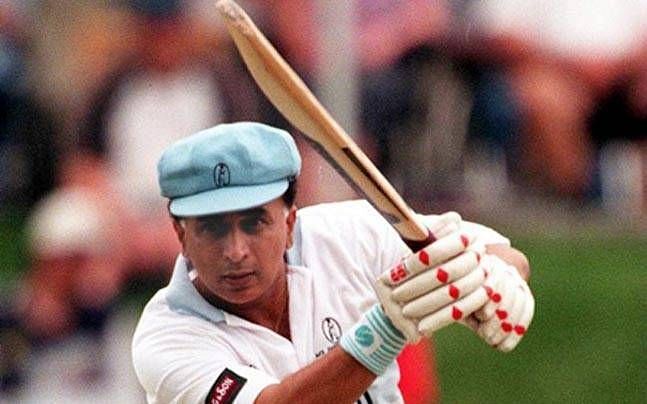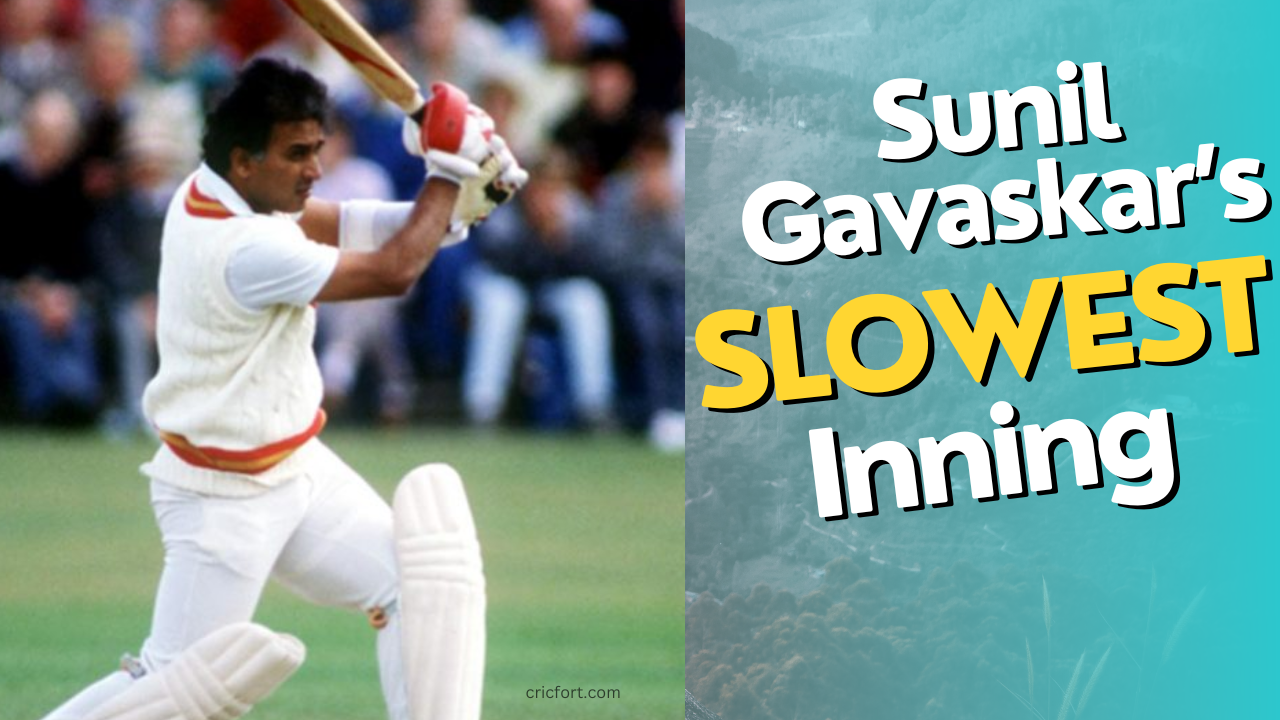Unraveling Sunil Gavaskar’s Slowest Inning: A Masterclass in Patience and Technique

Introduction
Regarded as one of the greatest batsmen in cricket history, Sunil Gavaskar’s name is synonymous with skill, technique, and immense determination. Known for his ability to bat for long hours, there is one inning that stands out amongst the rest – his slowest inning. In this article, we delve into the masterclass in patience and technique that Gavaskar displayed during this remarkable display.
Playing against the West Indies in 1971, Gavaskar showcased his unyielding resolve and unwavering focus. In a game that demanded quick runs, Gavaskar defied convention and batted at a snail’s pace, frustrating the opposing team to no end. With every stroke of the bat, Gavaskar exemplified his deep understanding of the game, choosing precision over aggression.
This inning was not only a testament to Gavaskar’s technical prowess but also a display of mental fortitude. With astonishing control over his shots, Gavaskar navigated the challenging pitch, proving that success in cricket often lies in mastering the art of patience.
In this article, we analyze Gavaskar’s slowest inning, dissecting the key moments that showcased his remarkable ability to adapt and strategize. Whether you’re a cricket enthusiast or someone looking to glean insights from a true legend, this article is sure to provide an illuminating and inspiring read.
The significance of Gavaskar’s slowest inning
Sunil Gavaskar’s slowest inning holds immense significance in the history of cricket. It represented a departure from the conventional approach to batting, where aggression and quick scoring were often prioritized. Gavaskar’s innings challenged the notion that fast runs were the only path to success, showing that patience and technique could be equally effective.
Gavaskar’s slowest inning highlighted his ability to stay at the crease for extended periods, frustrating the opposition and putting tremendous pressure on the bowlers. This approach not only showcased his technical brilliance but also demonstrated the value of discipline and mental strength in the sport.
Understanding Gavaskar’s approach to batting
Gavaskar’s approach to batting was rooted in a deep understanding of the game and an unwavering discipline. He believed in building a solid foundation and patiently waiting for the right opportunities to score runs. This approach required immense mental strength and control over his shots, as Gavaskar was often faced with challenging conditions and formidable opponents.
Instead of taking unnecessary risks, Gavaskar focused on playing each ball on its merit, carefully selecting which deliveries to attack and which to defend. This approach allowed him to accumulate runs steadily and consistently, ensuring that he could withstand the pressure and fluctuations of the game.
The conditions and opposition in Gavaskar’s slowest inning
Gavaskar’s slowest inning took place against the West Indies, a team known for its formidable bowling attack and aggressive style of play. The pitch conditions were challenging, with uneven bounce and movement off the seam. These factors made scoring runs quickly a difficult task, forcing Gavaskar to adapt his approach and prioritize survival over aggression.
Despite the challenging conditions and the quality of the opposition, Gavaskar remained unfazed. He meticulously analyzed the pitch and the bowlers, identifying their strengths and weaknesses, and devised a strategy to counter them. This level of preparation and adaptability allowed Gavaskar to thrive even in the toughest of circumstances.
Key moments and partnerships in the inning
Throughout his slowest inning, Gavaskar encountered several key moments and formed crucial partnerships that shaped the course of the game. One such moment was when he came to the crease with the team struggling and lost early wickets. Gavaskar’s presence brought stability to the innings, and he patiently built partnerships with his fellow batsmen, ensuring that the team could post a competitive total.
Another significant moment was when Gavaskar reached his century. It was a testament to his unwavering focus and resilience, as he battled through the challenging conditions to achieve this milestone. The celebration that followed not only showcased the joy of personal achievement but also the pride and admiration of his teammates and fans.
Analysis of Gavaskar’s technique and shot selection
Gavaskar’s slowest inning was a masterclass in technique and shot selection. He displayed impeccable footwork, always getting into position early and playing the ball under his eyes. This allowed him to judge the line and length accurately, making it easier to defend or attack as required.
Gavaskar’s shot selection was a combination of caution and calculated aggression. He chose to attack when there was a clear opportunity to score runs, often capitalizing on loose deliveries or scoring opportunities created by the field placements. However, he never compromised on his defensive skills, knowing that preserving his wicket was paramount.
Slowest Inning in his entire career
Sunil Gavaskar’s innings of 36 not out off 174 balls during the 1975 World Cup match against England is one of the most talked-about innings in the history of ODI cricket. It was the first match of the inaugural World Cup, and the Indian team was chasing a formidable target of 334 runs set by England. Gavaskar’s approach to the innings was perplexing to many, as he played through the entire 60 overs without showing any intent to chase the target.
The match took place at the iconic Lord’s Cricket Ground, and England had put up a strong total, thanks to a century by Dennis Amiss and solid contributions from Keith Fletcher and Chris Old. In response, Gavaskar opened the innings for India and adopted a very cautious approach. As the innings progressed, it became clear that he was not attempting to accelerate the scoring rate, which led to frustration among the spectators and his teammates. Some reports suggest that angry fans even invaded the pitch due to the slow pace of the innings.
Gavaskar’s strategy during this innings has been a subject of much speculation and discussion. He was dropped three times during his innings, and there was an instance where he claimed to have edged the ball but was not given out, as there was no appeal from the opposition. Reflecting on this innings, Gavaskar himself admitted to feeling a sense of mental agony and playing mechanically towards the end. India finished their innings at 132-3, and Gavaskar’s knock remains one of the slowest in the history of ODI cricket
The impact of Gavaskar’s slowest inning on the match and his career
Gavaskar’s slowest inning had a significant impact on the match and his career. It not only helped India post a respectable total but also put pressure on the West Indian bowlers, who were accustomed to dominating their opponents. Gavaskar’s innings changed the dynamics of the game, forcing the opposition to rethink their strategy and approach.
Furthermore, this inning solidified Gavaskar’s reputation as a batsman with exceptional skill and temperament. It showcased his ability to adapt to different conditions and opposition, proving that he was a force to be reckoned with in international cricket. This performance elevated Gavaskar’s career to new heights and cemented his legacy as one of the all-time greats of the game.
Lessons we can learn from Gavaskar’s patience and technique
Gavaskar’s slowest inning offers valuable lessons for aspiring cricketers and individuals in any field. It teaches us the importance of patience and discipline, reminding us that success often comes to those who can endure and withstand challenges. Gavaskar’s approach to batting highlights the value of meticulous preparation, adaptability, and understanding the strengths and weaknesses of your opponents.
Moreover, Gavaskar’s slowest inning emphasizes the significance of technique and shot selection. It serves as a reminder that a solid foundation and sound fundamentals can be the key to success, even in the face of adversity. Gavaskar’s ability to choose the right shots at the right time demonstrates the importance of making informed decisions and capitalizing on opportunities.
Gavaskar’s legacy and impact on Indian cricket
Sunil Gavaskar’s slowest inning is just one example of his remarkable contributions to Indian cricket. Throughout his illustrious career, he shattered numerous records and set new benchmarks for excellence. Gavaskar’s meticulous technique, unwavering resolve, and immense skill inspired generations of cricketers in India and beyond.
His slowest inning represents the essence of Gavaskar’s genius, encapsulating his ability to thrive under pressure and his unrivaled patience at the crease. Gavaskar’s impact on Indian cricket extends beyond his individual achievements, as he paved the way for future generations of Indian batsmen to excel on the international stage.
Conclusion
Sunil Gavaskar’s slowest inning remains etched in cricket history as a masterclass in patience and technique. It showcased his ability to adapt to challenging conditions, strategize against formidable opponents, and demonstrate unwavering mental strength. Gavaskar’s approach to batting serves as an inspiration for aspiring cricketers and individuals in any field, highlighting the value of discipline, technique, and resilience.
As we unravel the intricacies of Gavaskar’s slowest inning, we gain a deeper appreciation for his contributions to the game and the indelible legacy he has left behind. Sunil Gavaskar will forever be remembered as a true legend of cricket, and his slowest inning stands as a testament to his greatness.

